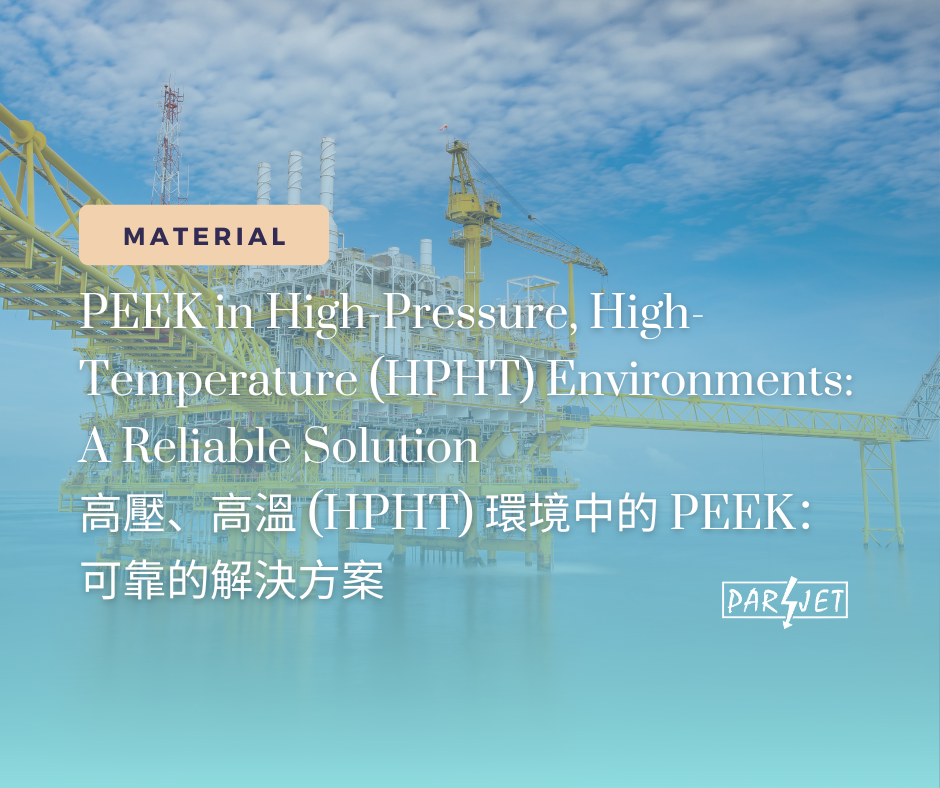
PEEK in High-Pressure, High-Temperature (HPHT) Environments: A Reliable Solution
Polyether Ether Ketone (PEEK) has become a top choice in industries that demand materials capable of withstanding extreme conditions. PEEK’s unique combination of properties—including its high-temperature stability, chemical resistance, and mechanical strength—makes it especially well-suited for high-pressure, high-temperature (HPHT) environments. This article explores why PEEK is a reliable solution for HPHT applications, how it compares to other materials, and where it’s most used.
1. Why HPHT Environments Demand Specialized Materials
HPHT environments are typically characterized by pressures over 10,000 psi and temperatures exceeding 300°F (150°C). These extreme conditions can lead to significant material degradation, loss of structural integrity, and chemical breakdown in many conventional materials, impacting their effectiveness and longevity.
Materials used in HPHT applications must maintain their shape and properties under such stress while resisting chemical attack and abrasive wear. For industries such as oil and gas, aerospace, and power generation, where failure could result in safety risks and costly downtime, choosing the right material is essential.
2. Key Properties of PEEK in HPHT Environments
PEEK is unique in its ability to retain structural and mechanical properties under intense pressure and temperature. Here are some of the properties that make PEEK suitable for HPHT applications:
- • High Thermal Stability: PEEK can withstand continuous use in temperatures up to 500°F (260°C), far exceeding many other polymers.
- • Mechanical Strength: Even under high pressure, PEEK maintains a high tensile strength and is resistant to deformation, preventing seal or structural failure.
- • Chemical Resistance: PEEK resists degradation from harsh chemicals, including acids, bases, and hydrocarbons, which are commonly encountered in HPHT environments.
- • Low Creep and Wear: PEEK’s low coefficient of friction and excellent wear resistance reduce degradation from abrasive conditions, making it ideal for moving parts like seals and bushings.
- • Hydrolysis Resistance: PEEK resists moisture absorption and maintains performance in wet or humid environments, important for oil and gas and marine applications.
3. Comparison of PEEK to Other Materials in HPHT Applications
PEEK’s combination of strength and durability makes it a standout among other materials typically used in HPHT environments:
- • PEEK vs. Metals: While metals like stainless steel or titanium are strong in HPHT environments, they’re prone to corrosion in aggressive chemical settings. PEEK offers a corrosion-resistant alternative with comparable strength at a fraction of the weight, enhancing equipment efficiency and longevity.
- • PEEK vs. Other Polymers: Many engineering plastics cannot withstand temperatures or pressures as high as PEEK without losing structural integrity. PEEK remains stable, providing reliability that most other polymers cannot match.
- • PEEK vs. Composites: Reinforced composites may offer high strength but often lack PEEK’s resistance to chemicals, abrasion, and wear. PEEK also provides the added benefit of machinability, allowing for highly precise components.
4. Common Applications of PEEK in HPHT Environments
PEEK is used in various industries that demand high reliability under extreme conditions:
- • Oil and Gas: PEEK is extensively used for seals, bushings, bearings, and valve seats in oilfield equipment. Its high chemical and temperature resistance make it ideal for downhole and subsea applications where it must withstand the extreme pressures and temperatures found deep below the Earth’s surface.
- • Aerospace: In aircraft and space applications, PEEK is used for components such as cable insulation, pump housings, and fasteners that must resist heat, pressure, and chemical exposure.
- • Power Generation: PEEK’s durability under high heat and pressure makes it suitable for components in turbines, boilers, and nuclear plants, where it maintains its structural integrity despite exposure to steam, chemicals, and extreme pressures.
- • Automotive: PEEK is used in high-performance engines and exhaust systems where high heat and mechanical stress demand resilient materials that can resist wear and degradation over time.
5. Benefits of Using PEEK in HPHT Environments
Using PEEK in HPHT settings offers numerous advantages:
- • Longer Service Life: PEEK’s resistance to wear and deformation helps extend the lifespan of components, reducing the frequency of maintenance and replacement.
- • Reduced Downtime and Costs: PEEK’s durability and chemical stability help lower the risk of equipment failure, reducing costly downtime in critical applications.
- • Greater Design Flexibility: PEEK’s machinability allows for precise, custom parts that meet the exacting requirements of HPHT applications.
- • Weight Reduction: PEEK’s lightweight nature compared to metals can significantly reduce the weight of components in fields like aerospace, contributing to improved energy efficiency.
6. Innovations and Future Applications of PEEK in HPHT
The demand for materials that can withstand even more extreme conditions continues to drive innovation in PEEK development. Advances in PEEK composite formulations, such as carbon or glass-fiber-reinforced PEEK, are further enhancing its mechanical properties for high-stress applications.
In the future, PEEK is expected to see increased use in renewable energy sectors, such as geothermal and hydrogen, where HPHT-resistant materials are essential. Its potential for longer lasting and more efficient components makes PEEK a material to watch as technology advances.
Conclusion
PEEK’s robust properties make it a great choice for high-pressure, high-temperature applications across various industries. With the ability to withstand extreme environments without compromising structural integrity or performance, PEEK is a reliable and cost-effective solution for demanding applications. As technology continues to evolve, PEEK’s role in HPHT applications is expected to grow, helping engineers solve challenges in some of the most extreme operational conditions.





